Agni Kumar
PhysioMTL: Personalizing Physiological Patterns using Optimal Transport Multi-Task Regression
Mar 19, 2022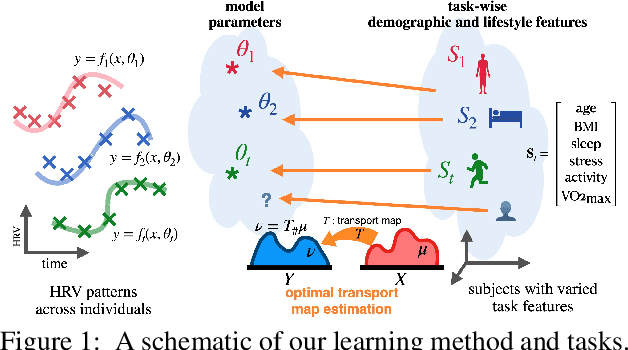

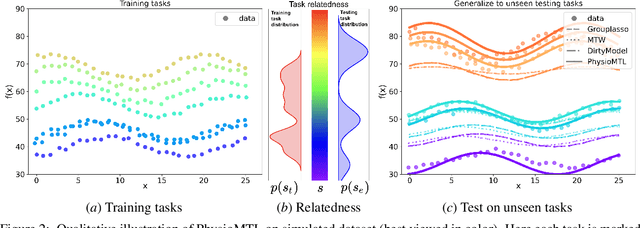

Abstract:Heart rate variability (HRV) is a practical and noninvasive measure of autonomic nervous system activity, which plays an essential role in cardiovascular health. However, using HRV to assess physiology status is challenging. Even in clinical settings, HRV is sensitive to acute stressors such as physical activity, mental stress, hydration, alcohol, and sleep. Wearable devices provide convenient HRV measurements, but the irregularity of measurements and uncaptured stressors can bias conventional analytical methods. To better interpret HRV measurements for downstream healthcare applications, we learn a personalized diurnal rhythm as an accurate physiological indicator for each individual. We develop Physiological Multitask-Learning (PhysioMTL) by harnessing Optimal Transport theory within a Multitask-learning (MTL) framework. The proposed method learns an individual-specific predictive model from heterogeneous observations, and enables estimation of an optimal transport map that yields a push forward operation onto the demographic features for each task. Our model outperforms competing MTL methodologies on unobserved predictive tasks for synthetic and two real-world datasets. Specifically, our method provides remarkable prediction results on unseen held-out subjects given only $20\%$ of the subjects in real-world observational studies. Furthermore, our model enables a counterfactual engine that generates the effect of acute stressors and chronic conditions on HRV rhythms.
Estimating Respiratory Rate From Breath Audio Obtained Through Wearable Microphones
Jul 28, 2021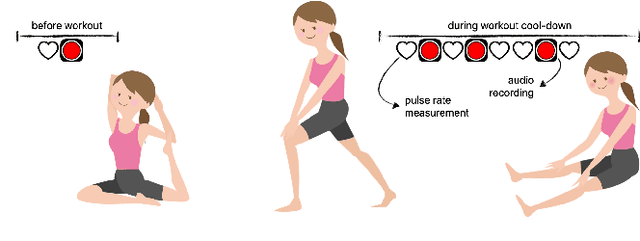
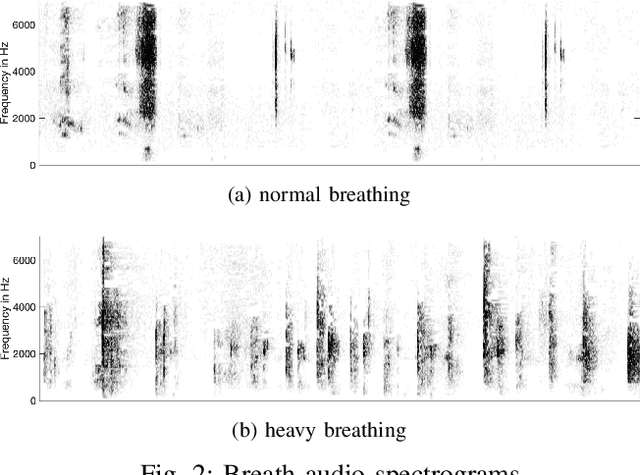
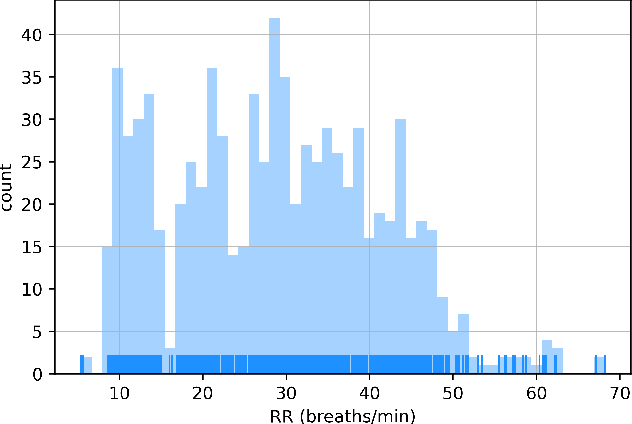
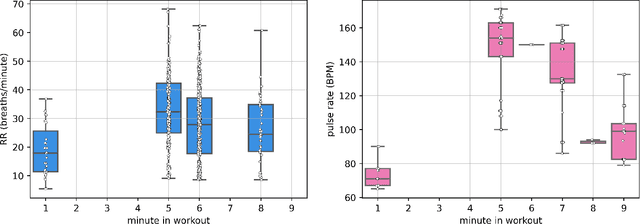
Abstract:Respiratory rate (RR) is a clinical metric used to assess overall health and physical fitness. An individual's RR can change from their baseline due to chronic illness symptoms (e.g., asthma, congestive heart failure), acute illness (e.g., breathlessness due to infection), and over the course of the day due to physical exhaustion during heightened exertion. Remote estimation of RR can offer a cost-effective method to track disease progression and cardio-respiratory fitness over time. This work investigates a model-driven approach to estimate RR from short audio segments obtained after physical exertion in healthy adults. Data was collected from 21 individuals using microphone-enabled, near-field headphones before, during, and after strenuous exercise. RR was manually annotated by counting perceived inhalations and exhalations. A multi-task Long-Short Term Memory (LSTM) network with convolutional layers was implemented to process mel-filterbank energies, estimate RR in varying background noise conditions, and predict heavy breathing, indicated by an RR of more than 25 breaths per minute. The multi-task model performs both classification and regression tasks and leverages a mixture of loss functions. It was observed that RR can be estimated with a concordance correlation coefficient (CCC) of 0.76 and a mean squared error (MSE) of 0.2, demonstrating that audio can be a viable signal for approximating RR.
 Add to Chrome
Add to Chrome Add to Firefox
Add to Firefox Add to Edge
Add to Edge